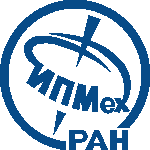
|
ИСТИНА |
Войти в систему Регистрация |
ИПМех РАН |
||
Combined method of protection of zinc from corrosion in solutions of sodium chloride using sodium tetraborate and superhydrophobization of the surface with octadecylphosphonic acidстатья
- Авторы: Redkina G.V., Kuznetsov Yu I.
- Журнал: International Journal of Corrosion and Scale Inhibition
- Том: 13
- Номер: 4
- Год издания: 2024
- Издательство: Некоммерческое партнерство коррозионистов "Вакор"
- Местоположение издательства: Москва
- Первая страница: 2180
- Последняя страница: 2199
- DOI: 10.17675/2305-6894-2024-13-4-14
- Аннотация: The features of protection of zinc in a chloride aqueous solution using a new combined method, which consists of superhydrophobization of its surface with octadecylphosphonic acid (ODPhA) and the introduction of borax into a corrosive medium was studied. In particular, the effect of concentration of borax and morphology of zinc surface on the protective and superhydrophobic properties of the alkylphosphonate superhydrophobic (SHPh) film in solutions of sodium chloride of various concentrations was studied. High efficiency of the suggested combined method for protection of zinc was proven. The introduction of borax (from 1.0 to 5.0 mM) into a 1.0 mM solution of NaCl prevents degradation of the SHPh alkylphosphonate film, inhibits both partial reactions on zinc and significantly increases its corrosion resistance. It was established that the inhibiting effect of borax enhances linearly with increasing its concentration in the chloride solution. The efficiency of the suggested combined method of protection of zinc is maintained in more concentrated solutions of NaCl (10.0 and 50.0 mM), despite the acceleration of degradation of the SHPh film and a decrease in the corrosion resistance of zinc. SHPh alkylphosphonate films prepared on a laser-textured zinc surface provide significantly more effective anticorrosion protection of zinc in a chloride solution within the framework of the combined method than those prepared on the etched surface. Superhydrophobization of zinc by laser treatment with low scanning speed followed by passivation with ODPhA in combination with addition of 1.0 mM borax in 1.0 mM NaCl solution provides reliable anti-corrosion protection of zinc for 48 days.
- Добавил в систему: Редькина Галина Владимировна